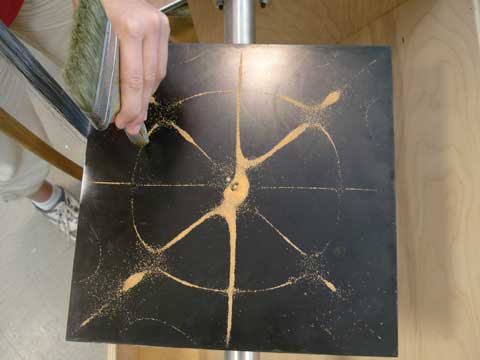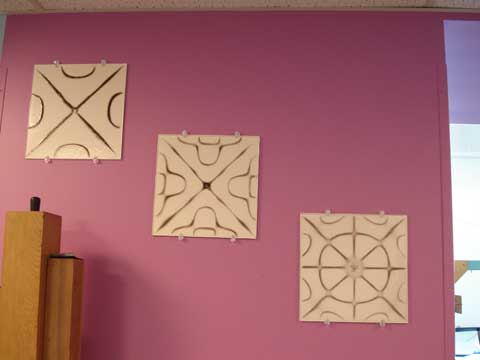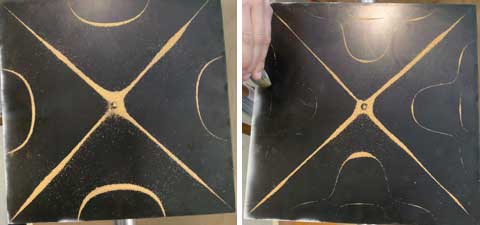Patterns in the Sand

Chladni Plate in the Physics Lab in the Oregon Museum of Science and Industry (OMSI)
Picture Courtesy of Kerry Montgomery
When a Chladni plate vibrates patterns emerge in the sand. It's not magic, or the hand of an invisible artist, but the vibrations themselves that cause the lines and patterns to emerge.
When the plate vibrates at frequencies, the plate bends in waves starting from where the vibration originated, moving across the plate and then reflecting back. When the frequency of the wave moving across the plate is the same as the frequency being reflected, this is called the natural resonance or natural frequency of the plate. When this happens, the waves moving across the plate interfere, cross paths, with the waves reflecting back across the plate. The interference of these waves is what causes the patterns to emerge.
A wave consists of a crest and a trough. When two interfere, the resulting wave gets bigger. When two troughs interfere the resulting wave is a larger trough, meaning that the wave is deeper. When a crest and a trough interfere, they cancel the wave out. When there is a natural frequency and the original wave and the reflecting wave have the same magnitude, or height (one going up and one going down), they create what is known as a node, a place of stillness, where no vibration is happening. In these nodes is where the sand settles, creating the patterns on the Chladni plate.

Glass with fused patterns from Chladni plate
Artwork and photography by Kerry Montgomery

Other patterns created by different frequencies on Chladni plate at OMSI
Photos courtesy of Kerry Montgomery
To learn more:
http://www.physics.ucla.edu/demoweb/demomanual/acoustics/effects_of_sound/chladni_plate.html











